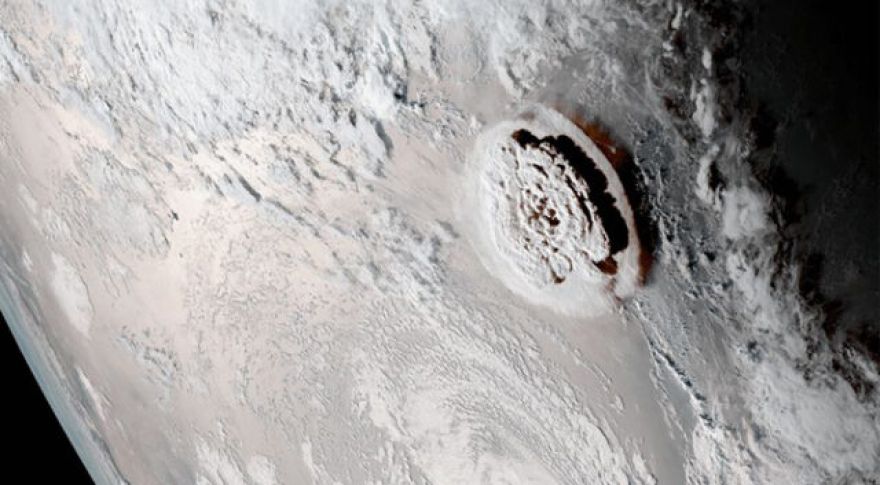
NASA: Tonga Volcanic Eruption Blasted ‘Unprecedented’ Amount of Water Into Atmosphere
In late 2021, an underwater volcano in the Tonga island chain awakened and began belching ash into the sky. The eruption culminated with an enormous explosion on January 15, 2022, and scientists are still working to understand the impact of this cataclysmic event. A new study from NASA’s Jet Propulsion Laboratory suggests that the eruption may have sent so much water vapor into the atmosphere that it could damage the ozone layer and exacerbate Earth’s already dangerous warming.
The new analysis was led by atmospheric scientist Luis Millán, finding that the Hunga Tonga–Hunga Haʻapai eruption sent around 146 teragrams (146 trillion grams) of water into the atmosphere.
Millán and his team reviewed data from the NASA Aura satellite’s Microwave Limb Sounder (MLS) instrument. NASA designed this orbiter to measure atmospheric gasses, including water vapor. It shows that Tonga–Hunga Haʻapai injected most of that water vapor into the stratosphere. That’s the layer of the atmosphere between 8 and 33 miles (12 and 53 kilometers) above sea level. Most volcanic eruptions cool the planet by blasting particulates and aerosols into the sky, but the Tonga event didn’t do that.
The eruption was a perfect storm of sorts. The underwater volcano’s caldera was about 490 feet (150 meters) below the surface, which was just right to launch the maximum amount of water into the atmosphere. If it was shallower, there wouldn’t have been enough superheated seawater to impact the planet. If it was deeper, the water would have muted the eruption. The MLS was able to calculate the volume of vaporized water because it relies on natural microwave signals emitted by Earth’s atmosphere. While other instruments were blinded by the volcanic ash, MLS could see it all.
, published in Geophysical Research Letters, says that all the excess water vapor will affect atmospheric chemistry in the short term. It may exacerbate the depletion of the ozone layer, which could increase ultraviolet levels on Earth. In addition, water vapor traps heat and will likely contribute to higher temperatures. The good news is that water vapor cycles out of the atmosphere over time. Any increase in temperatures should be temporary, but it’s not like Earth needs to get any warmer. that we are on the precipice of disaster if carbon emissions are not brought under control.
Now read: